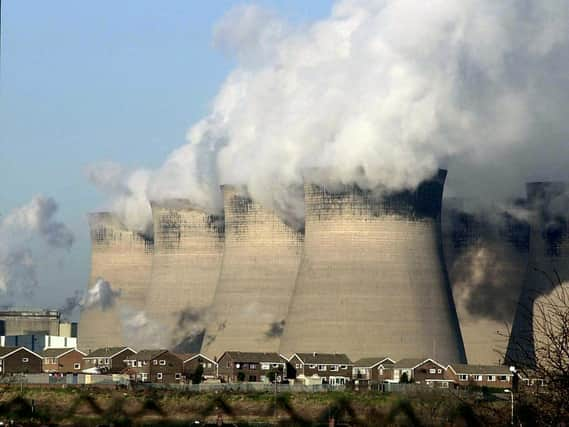North Lincs air pollution close to 'unsafe limit'


Health campaigners say "toxic" air quality in the UK is a national emergency and the Government must impose stricter limits on fine particles in the air (PM2.5), which come mainly from the burning of oil, gas and diesel and can lodge in the lungs and even pass into bloodstream, potentially causing damage to blood vessels and organs.
Levels of the PM2.5 particles have fallen in England since 2011, when national records began, from 12.1 micrograms per cubic metre to 9.6 in 2019.
Advertisement
Hide AdAdvertisement
Hide AdFigures from the Department for Environment Food and Rural Affairs show the average concentration of PM2.5 pollution particles in North Lincolnshire was 9 micrograms per cubic metre in 2019 – below the UK limit of 25, but close to the WHO guideline limit of 10.
Separate figures published by the NHS show an estimated 4.9 per cent of deaths among people aged 30 and over in North Lincolnshire were associated with long-term exposure to PM2.5, unchanged from the year before.
Defra’s readings for PM2.5 are calculated using air quality measurements, along with numbers and locations of people in each local authority, to provide average annual levels of exposure.
A spokesperson said: "We know there is more to do as we build back greener from the coronavirus pandemic.
Advertisement
Hide AdAdvertisement
Hide Ad“Through our landmark Environment Bill we have committed to a new concentration target on PM2.5 - the most damaging pollutant to human health - and as part of this we will be considering the WHO’s guidelines for PM2.5.”
The British Heart Foundation, which is campaigning for stricter limits on PM2.5 as part of the Government's Environment Bill which returns to Parliament this year, says the country faces “a public health emergency”.
John Maingay, director of policy and influencing at the charity, said: "Our toxic air is a public health emergency, and now is the time to take robust action to support everyone’s health as we look to recover from the pandemic."
He added: “We are pleased that the Environment Bill, which will set more stringent air quality limits, will soon be returning to complete its passage through Parliament.
Advertisement
Hide AdAdvertisement
Hide Ad"However, this must go further and ensure WHO limits are adopted into law, and met by 2030.
“Stricter, health-based air quality guidelines are urgently needed to protect the health of the nation and clean up toxic air for good.